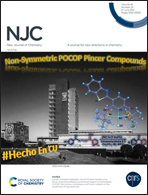Strengthening and toughening sodium alginate fibers using a dynamically cross-linked network of inorganic nanoparticles and sodium alginate through the hydrogen bonding strategy
Abstract
In order to improve the mechanical properties of sodium alginate (SA) fibers, a dynamically cross-linked network of inorganic nanoparticles (VSNP) and SA was constructed in this study to strengthen and toughen SA fibers by the hydrogen bonding strategy. The SA–VSNP spinning solution was prepared by the “one-pot method” and the fibers were prepared by wet spinning. The influence of the dynamically cross-linked network on the intermolecular hydrogen bonding, the fluidity of the spinning solution, the mechanical properties of the fibers, the structural morphology, etc. was analyzed using an infrared spectrometer, a rotational rheometer, a single fiber strength machine, a scanning electron microscope, an X-ray diffractometer and other research methods. This study found that the introduction of the dynamically cross-linked network increased the intermolecular hydrogen bonds between hybrid chains. The fluidity of the spinning solution was improved effectively. Although the dynamically cross-linked network adversely affected the crystallization properties, it significantly homogenized the network and overcame the stress concentration by fracture and formation of hydrogen bonds. The effect of strengthening and toughening was outstanding. The breaking strength of the SA–VSNP fibers was 3.17 cN/dtex and the elongation at break was 10.19% when the content of VSNP was 30 wt%. Compared with the pure SA fibers, the increase was 57.71% and 23.52%, respectively.



 Please wait while we load your content...
Please wait while we load your content...